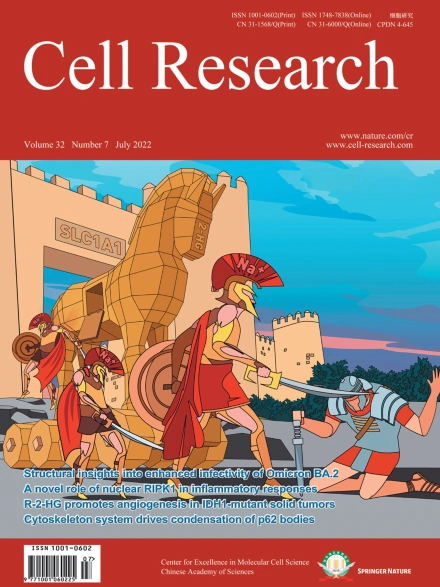
Advanced Search
Submit Manuscript
Advanced Search
Submit Manuscript
Volume 32, No 7, Jul 2022
ISSN: 1001-0602
EISSN: 1748-7838 2018
impact factor 17.848*
(Clarivate Analytics, 2019)
Volume 32 Issue 7, July 2022: 699-702
Treatment of autosomal recessive hearing loss via in vivo CRISPR/Cas9-mediated optimized homology-directed repair in mice
Xi Gu1,2,3,4,† , Xinde Hu5,† , Daqi Wang1,2,4,† , Zhijiao Xu1,2,4 , Fang Wang1,2,4 , Di Li6,7 , Geng-lin Li1,2,4 , Hui Yang5 , Huawei Li1,2,4,8,* , Erwei Zuo7,* , Yilai Shu1,2,4,*
1ENT institute and Department of Otorhinolaryngology, Eye & ENT Hospital, State Key Laboratory of Medical Neurobiology and MOE Frontiers Center for Brain Science, Fudan University, Shanghai, ChinaDear Editor,
Hearing loss is the most common sensory disorder in the world. Among cases of non-syndromic hearing loss, which account for 70% of all cases of genetic hearing loss, around 80% of cases arise from autosomal recessive loss-of-function mutations that require repair, rather than disruption, of the mutant allele.1 CRISPR/Cas9-mediated homology-directed repair (HDR)-based therapies have the potential to cure many genetic diseases because this class of therapeutics can achieve arbitrary base changes as well as the insertion or deletion of DNA fragments.2 However, HDR is considered to be largely restricted to dividing cells and is generally inefficient in animal tissues in vivo.3 CRISPR/Cas9-mediated HDR has been successfully used to efficiently correct the Cdh23ahl allele in C57BL/6NTac zygotes and to rescue the associated auditory phenotype.4 However, there have been no reports of applying this strategy at the postnatal stage (i.e., in vivo) to achieve hearing preservation in animal models of hereditary hearing loss. An efficient HDR strategy in nondividing mammalian cells (including cochlear hair cells) holds promise for developing treatments for recessive hearing loss. We previously devised a new homology-mediated end joining (HMEJ)-based strategy using CRISPR/Cas9-mediated cleavage of the transgene donor vector, which contains guide RNA target sites and ~800 bp of homology arms, and cleavage of the targeted site in the genome5 (Supplementary information, Fig. S1). This approach, which is an optimized version of HDR, achieved transgene integration in mouse and monkey embryos, as well as in hepatocytes and neurons in vivo, with an efficiency much greater than homologous recombination- and nonhomologous end joining-based strategies.5
https://doi.org/10.1038/s41422-022-00624-y